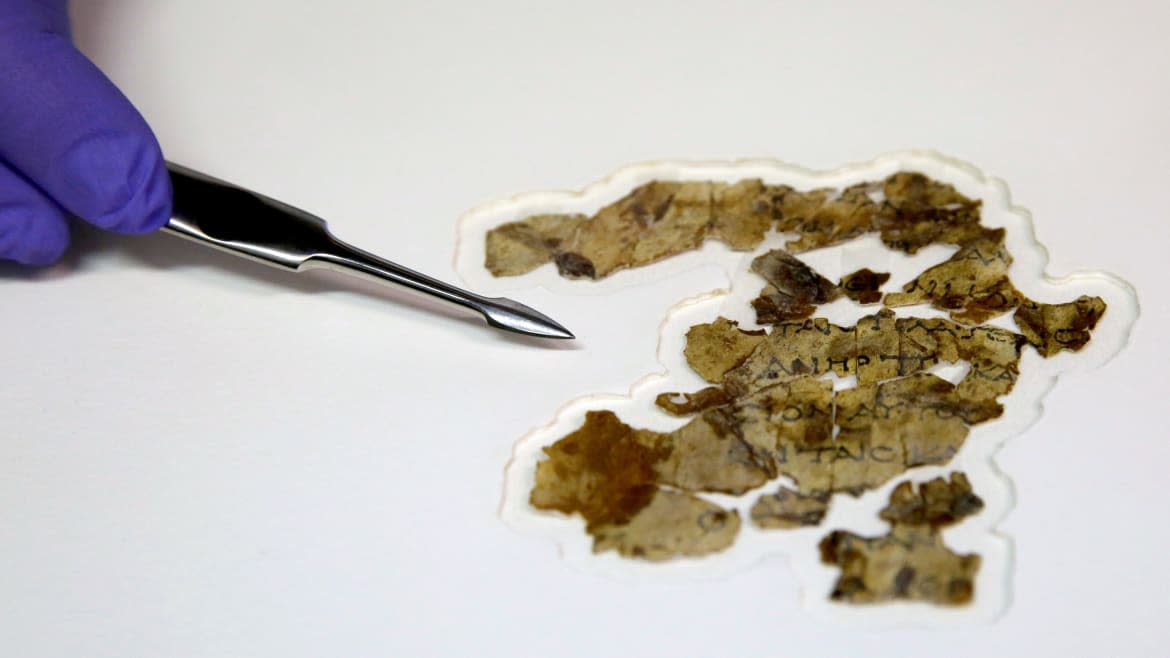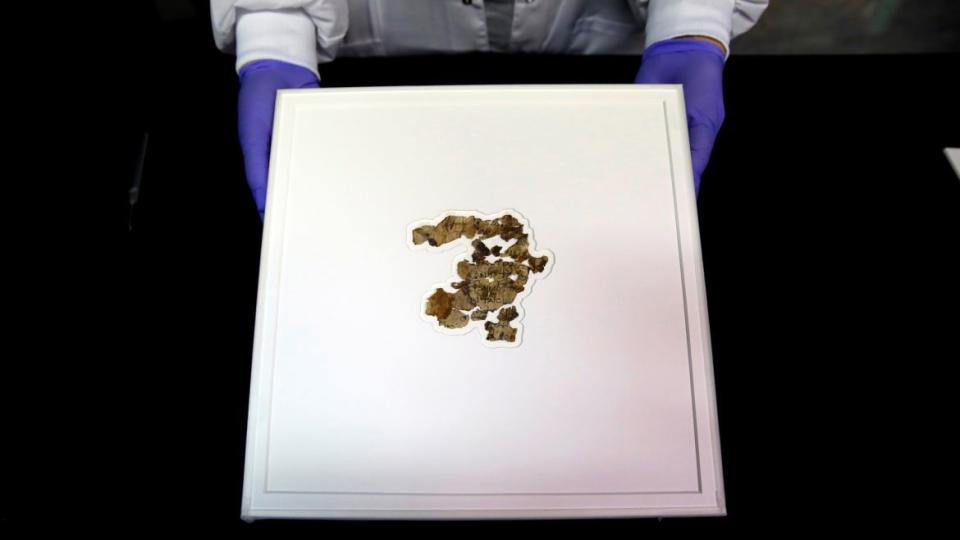‘Cave of Horrors’ Bible Scrolls Shed Light on Jewish Rebels

Imagine that you knew that you were going to die. Having taken refuge from a merciless military regime in a cave, you now realize that you are trapped in a prison of your own making. The enemy is camped above you and so you, your family, and your friends face a slow, painful death from starvation. What would you talk about? How would you console your children? How would you pass the days? The situation is horrifying and almost impossible for us to picture, but a new archaeological discovery sheds light on the last days of a small group of freedom fighters in ancient Judea.
Fragments of a biblical scroll have been discovered in the uninvitingly named “Cave of Horror” in the Judean desert in Israel. The fragments, which are written in Greek and are almost two millennia old, are the literary legacy of a small band of Jewish rebels who starved to death there in the second century C.E. The discovery is the first time in 60 years that a biblical scroll has been found in an archaeological context, and it gives us insight into the final days of this small group.

A staff member shows fragments of the new discovered Dead Sea Scroll in a lab in the Israel Museum in Jerusalem on March 16, 2021. Israeli archaeologists have discovered dozens of fragments of a biblical scroll written in Greek in the Cave of Horror near the Dead Sea
The Cave of Horror (sometimes known as the Cave of Skulls) was discovered in 1960. Its name is derived from the 40 skeletons discovered when archaeologists first entered the cave. The human remains belong to members of the Bar Kokhba revolt (132-135 C.E). After 50 years of tension between Jews and Roman authorities in Judea, the messianic figure named Simeon Bar Kokhba led a rebellion against the occupying Roman forces. The effects of the revolt were devastating: the historian Cassius Dio writes that 580,000 Judeans died and almost 1,000 villages were destroyed. A group of refugees from the war—men, women, and children—fled to the desert and hid in caves on what is now the West Bank. The Romans camped above the caves at the top of the cliff and those hiding in the cave below slowly starved to death.
Though the Cave of Horror was excavated in the 1960s the difficulty accessing the cave—it is 80 meters below the cliff top and archaeologists have to rappel down the cliff to access it—means that it has remained largely inaccessible. Interest in its secrets was sparked by a 2017 Israeli Antiquities Authority initiative to find and retrieve priceless scrolls hidden in the Judean caves before looters have the chance to steal them. The preemptive effort has meant that many previously excavated sites, like the Cave of Horror, are receiving renewed attention.
The more than 80 scroll fragments discovered in the excavation have been dated (on the basis of handwriting) to the end of the first century BCE. Like other ancient Greek manuscripts of the Bible, the name of God is preserved in Hebrew. The scroll fragments contain passages from the books of the prophets Zechariah and Nahum, suggesting that the fragments once formed part of a scroll of the 12 minor prophets in the Hebrew Bible. One section contains a poignant passage from Zechariah 8:16-17: “These are the things you are to do: Speak the truth to one another, render true and perfect justice in your gates. And do not contrive evil against one another, and do not love perjury, because all those are things that I hate — declares the Lord.” The fragment from the cave however replaces the word “gates” with “streets.” As Oren Ableman, a member of the IAA team who worked on the scroll fragments, told the Jerusalem Post that he “had never seen this before.”
Alongside the biblical scroll the team unearthed something macabre: the mummified remains of a small child. Inside the cave, in a shallow pit, they found the remains of a girl who died between the ages of 6 and 12, and had been interred in the fetal position. Her remains are 6,000 years old. Even more stunning was the discovery of a prehistoric woven basket estimated to be 10,500 years old. If the dating is correct this would make the basket the largest intact basket ever discovered.
The excavation also unearthed a small cache of Bar Kokhba era coins bearing images of a palm tree and vine leaf. The coins, which bore the words “Year 1 for the redemption of Israel,” would have proved useless at the end, but the scrolls may well have served as a source of comfort and consolation to those awaiting their death.
For scholars, the discovery of a new ancient Bible scroll also brims with possibility. The turn of the Common Era was a period in which the Hebrew Bible was still emerging. What makes the more famous (and geographically and socially distinct) Dead Sea Scrolls so important is that they help us construct the history of the Biblical text itself. Professor Charlotte Hempel of the University of Birmingham, a specialist on the Dead Sea Scrolls, told The Daily Beast that the scrolls of the Qumran Community (also known as the Essenes) display “intriguing signs that [the Bible] was nevertheless still fluid.” But by the end of the first century CE, she said, the Greek and Hebrew manuscripts are “much more stable.”
The fragments from the Cave of Horror, Hempel said, show “evidence of a biblical prototype that gained the upper hand in the Judean Desert from the late first century CE.” In other words, they provide more evidence about the history of the scriptural text itself. Beatriz Riestra of the IAA Dead Sea Scrolls Unit said that this manuscript shows the “effort of the translators to remain [close] to the original Hebrew.” As Ableman put it, the artifacts provide “another small piece of the puzzle of the past.”
Get our top stories in your inbox every day. Sign up now!
Daily Beast Membership: Beast Inside goes deeper on the stories that matter to you. Learn more.

